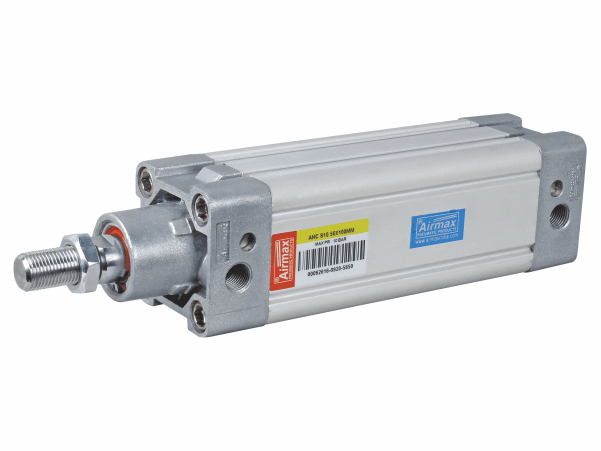Pneumatic cylinders are devices that are widely used in a range of industries and applications to convert compressed air into mechanical motion. They are designed to create linear motion in a straight line, and are commonly used to power tools, machinery, and other automated systems. There are several types of pneumatic cylinders available on the market today, each with their own unique characteristics and capabilities. In this article, we will explore the different types of pneumatic cylinders and their applications.
Single-acting Pneumatic Cylinders
Single-acting pneumatic cylinders are the simplest type of pneumatic cylinder available. They have a single air inlet that is used to create force in only one direction. The piston inside the cylinder is driven by the compressed air and moves in one direction, either towards or away from the air inlet. The other end of the cylinder is equipped with a spring or other mechanical device that returns the piston to its original position when the air pressure is released.
Single-acting pneumatic cylinders are commonly used in applications that require a relatively small amount of force, such as clamping and gripping. They are also used in applications where the force required to move the cylinder is supplied by an external force, such as a spring or gravity.
Double-acting Pneumatic Cylinders
Double-acting pneumatic cylinders are the most common type of pneumatic cylinder used in industrial applications. They have two air inlets, one on each side of the piston, which allows for force to be created in both directions. The compressed air is used to push the piston in one direction, and then the air is released and allowed to flow into the other side of the cylinder, which creates force in the opposite direction.
Double-acting pneumatic cylinders are used in a wide range of applications, including material handling, packaging, and robotics. They are also used in applications where a greater amount of force is required than can be supplied by a single-acting cylinder.
Guided Pneumatic Cylinders
Guided pneumatic cylinders are designed to provide greater accuracy and stability in applications where precise motion is required. They have a guide rod or other mechanical device that ensures the piston moves in a straight line, without any side-to-side movement. This makes them ideal for applications where precise positioning is required, such as in assembly lines or inspection systems.
Guided pneumatic cylinders are available in both single-acting and double-acting designs, and are commonly used in industries such as automotive manufacturing, electronics, and pharmaceuticals.
Rotary Pneumatic Cylinders
Rotary pneumatic cylinders are designed to create rotational motion, rather than linear motion. They are commonly used in applications where a rotary motion is required, such as in conveyor systems, indexing tables, and packaging equipment.
Rotary pneumatic cylinders come in a variety of designs, including rack and pinion, vane, and helical. They are typically operated using compressed air, but can also be operated using hydraulic fluid.
Conclusion:
Pneumatic cylinders are an important component of many industrial applications, and understanding the different types of cylinders available is essential to selecting the right cylinder for your specific application. Whether you need a cylinder for a high-force application or a precise positioning application, there is a many pneumatic cylinder types available to meet your needs. By understanding the differences between single-acting, double-acting, guided, and rotary pneumatic cylinders, you can choose the one that is best suited for your application and ensure that your machinery and equipment operate efficiently and effectively.
When selecting a pneumatic cylinder, it’s important to consider factors such as the amount of force required, the stroke length, the speed of operation, and the level of precision needed. You should also consider the environment in which the cylinder will be used, including factors such as temperature, humidity, and exposure to chemicals or other substances.
By choosing the right pneumatic cylinder for your application, you can improve the efficiency and reliability of your machinery and equipment, which can ultimately lead to increased productivity and profitability for your business. So take the time to explore the different types of pneumatic cylinders available, and choose the one that best meets your needs.


